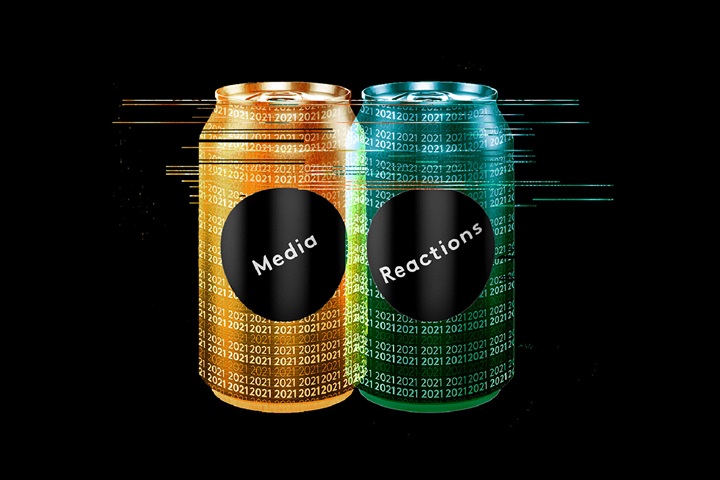Our recent article in the brand equity series revealed that campaigns could be 2.6 times more effective in building equity with a different media spend allocation. In an increasingly complex media landscape, how can you ensure you invest in the touchpoints that have the most impact?
We now broaden the focus with analysis from Kantar’s Connect touchpoint database to look at paid, owned and earned touchpoints, and how their impact on brand building has evolved. With 20% of all touchpoints accounting for 80% of brand impact – knowing which consumer interactions to target is essential for brand strategy.
Dynamic media landscapes
While marketers around the world strive to understand the impact of changing consumer behaviour and media consumption during and after the pandemic, the dynamism of media landscapes is not a new phenomenon. A new year-on-year analysis across 40 consumer touchpoints reveals how the importance of touchpoints has been evolving over the past few years, globally and locally – both digital and offline.
Over the past four years, the advertising market has become more dynamic. The overall impact of all touchpoints on brand equity, and therefore the influence of marketing activities, has increased from 16% to 19%. The impact of paid touchpoints has grown (from 28% share to 30%), while earned touchpoints have gradually lost impact (from 46% to 41%). This is good news for marketers, as it improves their chances to communicate directly with consumers.
Share of touchpoint impact on brand equity over time (selected touchpoints)

Digital channels saw the biggest growth in share of impact – from 36% to 49%. As digital ad spend continues to rise globally, the share of touchpoint impact is likely to continue to grow.
In contrast, the impact of offline touchpoints has declined. TV ads, word of mouth and in-store activation decreased in their quality of experience, resulting in a much lower brand impact. The impact of print stayed stable and OOH ads and sponsorship touchpoints have grown. This is mainly due to increasing mental availability, although the quality of experience actually fell. This means that brands continue to invest in traditional touchpoints, but their effect on consumers’ brand perceptions is declining, which reduces the return on investment.
Monitor and course-correct
Ongoing digitalisation offers competitive opportunities for brands that understand how to use digital channels effectively. Our US financial service client tracks the touchpoint landscape in the finance industry annually. They saw a gradual increase in the impact of digital touchpoints year-on-year. While TV had always been in the lead, in 2021, YouTube (ads and content) topped the list. At number three, TV was still the biggest contributor amongst traditional paid media – although it was trailing in terms of experience quality. Podcasts took a leap forward to one of the top five touchpoints with almost three times the average category impact.
The importance of digital media for the category was clear from the 2019 study. Our client subsequently moved spend from less impactful touchpoints to digital ones, and the 2021 study proved how valuable digital was in building the brand. Touchpoints like education programmes and community volunteers now have less impact, so we are now advising our client to shift spend to more impactful touchpoints such as OOH, social and podcasts, which have shown consistent upward progress.
While we see the increasing importance of digital channels across countries and industries, our analysis also uncovers trends that are specific to particular industries. A German automotive client continuously monitors the touchpoint landscape in their major markets. They saw the impact of big automotive fairs steadily decline year-on-year, so they decided to shift investment to smaller local fairs, particularly in Asia, where they saw greater potential to engage with consumers. As a result, they managed to create higher mental availability and greater brand impact with a similar budget.
Look beyond touchpoint reach
When monitoring the impact of brand touchpoints over time, it’s important to look beyond reach. It is the quality of experience that matters. A beverage brand in Europe had been investing heavily in OOH and promotion in hotels, restaurants and cafes (HORECA). During the pandemic they feared they might lose brand impact as the pandemic lockdown forced consumers to stay at home, and restaurants, cafés and bars were temporarily closed. Their touchpoint tracking revealed that their brand suffered less than expected: while the reach of OOH and HORECA went down notably as anticipated, the quality of the experience increased compared to previous years. This almost compensated for the lower reach. Spending time outside and in restaurants or cafés had turned into a more special event during the pandemic and thus brands have better opportunities to engage with consumers in those valuable moments.
While the pandemic has accelerated digitalisation, touchpoint landscapes have always been dynamic, and even small and local events can lead to significant changes in the importance of brand touchpoints in some markets. A new competitor, or a competitive campaign, has the potential to change market dynamics and change the effectiveness of brand communication.
Monitoring touchpoint landscapes over time is key to understanding how they are changing and identifying challenges and opportunities to inform future investment.
This is the fifth article in our brand equity series. Read the first four articles below to learn more about effective brand building. To find out more about the evolving media landscape join our webinar revealing insights from Media Reactions 2021, with new data from over 14,500 consumers and 900 marketing professionals worldwide. Register here.


